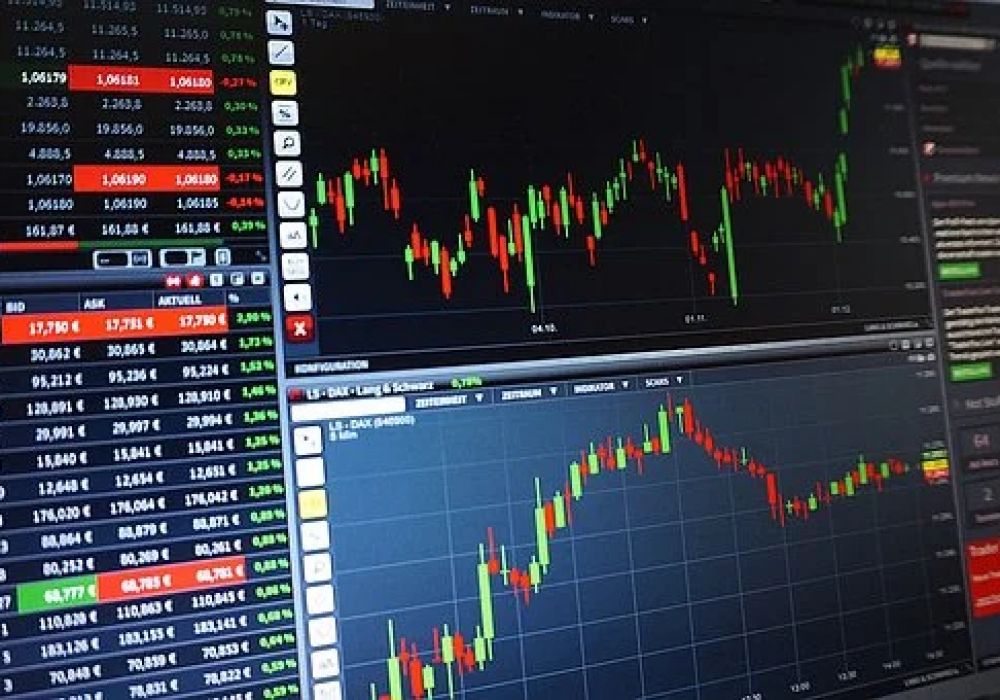The Key Stock Market Indicators That Will Help You As A Trader

Most traders will use market indicators to win big in the stock market as part of their technology strategies. When you pair these indicators with the management tools, you will get more insights into the market and their prices, enabling you to invest in the most profitable units.
Whether you are into commodities trading, share trading, or the forex market, it’s crucial to study various indicators for your trading. What are market indicators? These refer to math calculations based on market price charts that help identify trends in the stock market. This article will intensely discuss the key indicators that will help you greatly. Check on the list below.
1. Moving Average
The moving average, also referred to as the simple moving average, helps identify the stock market price’s direction, not affected by short-term price changes. This indicator combines price points from a specified period and divides them with data points to get the single trend line.
As mentioned at the thinkorswim platform, the kind of data used depends on the moving average. For instance, a 100-day moving average requires data of 100 days and so on. Using this indicator, you can study the support and resistance of the market and check its history. With its history, you can quickly determine how the market will move on in the future.
2. Stochastic Oscillator Indicator
This indicator is different from others as it compares the specific closing price of a particular asset in the market with its regular price. This indicator aims to study the momentum and strength of the market to guide the investors on the right way to invest. Here, a scale of 0 to 100 is used. Any readings below 20 will represent an oversold market, while over 80 represents an overly bought market. If there is a strong trend, then there will be no correction or rally in the market. This indicator shows the trader on stocks to buy and when to invest.
3. Moving Average Convergence Divergence
If you are a serious stock trader, you have probably heard about this indicator, which detects an asset’s momentum by comparing two moving averages. With this indicator, traders can easily identify the favorite buy and sell opportunities for their assets. They are also enabled to understand the support and resistance levels surrounding them in the market. Here, there are two averages.
Convergence averages are the two averages moving together, while divergence averages move away from each other. A convergence average will mean the market’s momentum is decreasing in the market, while the diverging ones will mean the momentum keeps on increasing. Any investor will use this to get the best out of the stock market.
4. Exponential Moving Average

The exponential average falls into the class of the moving average trading indicators. Unlike the moving average listed above, this one places a greater weight on the market’s recent data points, thus gathering data responsive to new information. When used with others, this indicator helps traders identify the market’s significant movements and gauge their legitimacy.
Some of the most popular used exponential moving averages include the short-term 12-day and 26-day exponential moving averages and the long-term 50-day and 200-day averages. Using the short and long-term indicators largely depends on the assets you have invested in.
5. Bollinger Bands
If trading in assets, Bollinger Bands is among the indicators that will help you get the range of asset prices in the market. Here, the width and length of the band indicator increase and decrease depending on the market volatility. The closer the band or the narrower they get, the lower the market’s volatility and vice versa. Bollinger bands mostly get used in trading assets outside their usual levels and get implied to look at the asset’s long-term price changes. In case the price moves into the upper parameters, it might mean the asset is overbought. When it goes below the lower band parameter, it will mean the asset got oversold.
6. Fibonacci Retracement
This indicator looks at the price of the market. It pinpoints the direction of the market against its current trend. The retracement period, also known as a pullback, is when the market dips down from its current trend. Fibonacci retracement mostly gets used by traders who want to confirm the market’s movement. It helps them find the market’s support and resistance, which signals the upward or downward trend. Through this, traders can apply stops or limits in their trading positions.
When using these and other indicators, you have to understand their rules and when to apply them. For instance, you can’t use one or too many indicators to determine the forex market. Also, it would be perfect to focus on what’s the best according to what you want to achieve in the forex market.










